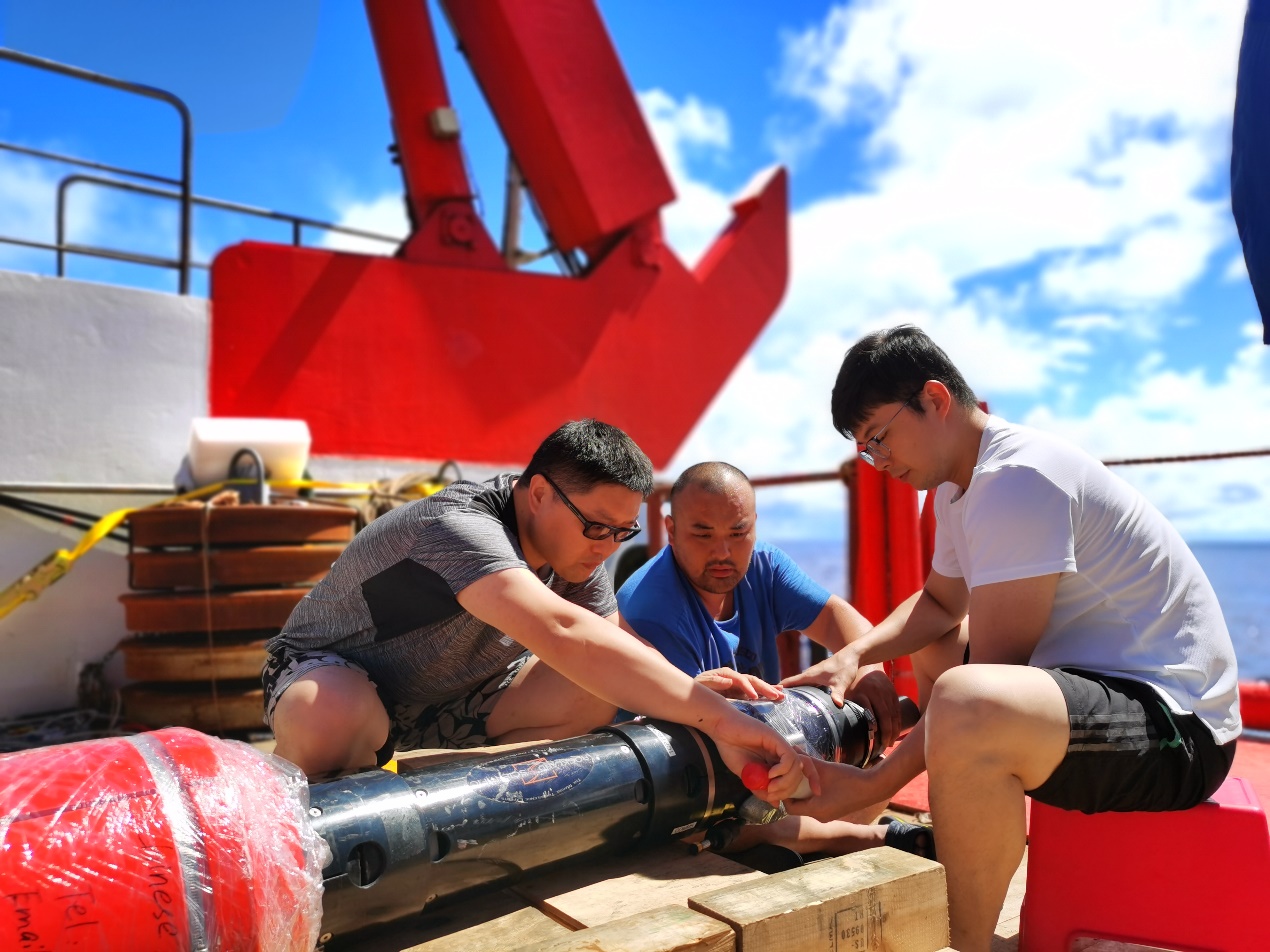(Text by WANG Jianing, wjn@qdio.ac.cn)

Jianing and his colleagues was preparing the deployment of the Vertical Microstructure Profiler at the afterdeck of RV "KeXue" in the western Pacific Ocean. Credit: Institute of Oceanology, Chinese Academy of Sciences
We are preparing the western tropical Pacific Ocean cruise, as a lead scientist. Since 2014, we have constructed and maintained a subsurface mooring network that typically consisted of 20 subsurface moorings in the western tropical Pacific Ocean (WTPO). This scientific observing network has realized the long-term measurements of the subsurface, intermediate, and deep ocean currents and water masses in this region.
The deep ocean truly is a new and exciting world waiting to be explored. The deep ocean is an immense reservoir for heat and carbon, with long residence times, making it an important component of the global climate system. I am currently focused on the Pacific deep western boundary current (DWBC). Based on observational data and numerical model outputs, I illustrate the pathway, volume transport, and forcing mechanism for the seasonal intrusion of the DWBC to the WTPO; reveal the characteristics and energy sources of "deep ocean storms" induced by the topographic Rossby wave; and find "a high-speed way" connecting the DWBC to the upper ocean processes and climate change. These new findings subvert the traditional view that the deep ocean circulation is in a state of calm, disorder, and a very slow variation.
(Editor: ZHANG Yiyi)

